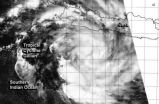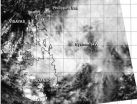(Press-News.org) DOWNERS GROVE, Ill. – March 21, 2014 – In recognition of National Colorectal Cancer Awareness Month, GIE: Gastrointestinal Endoscopy has published a special issue for March on colorectal cancer. The issue includes a new study that compares cold snare polypectomy with conventional polypectomy for the removal of small colorectal polyps in anticoagulated patients. The study showed that delayed bleeding requiring hemostasis (stoppage of bleeding) occurred significantly less often after cold snare polypectomy than during conventional polypectomy despite continuation of anticoagulants. GIE: Gastrointestinal Endoscopy is the monthly peer-reviewed scientific journal of the American Society for Gastrointestinal Endoscopy (ASGE).
The success of colonoscopy for the prevention of colorectal cancer is predicated on the ability to identify and remove precancerous lesions (polyps) from the colon and rectum. Many patients who are candidates for colorectal cancer screening also take anticoagulants and/or antiplatelet agents for treatment or prevention of cardiovascular or cerebrovascular diseases. Conventional polypectomy (polyp removal) without stopping the use of warfarin (used to prevent blood clots from forming or growing larger in the blood or blood vessels) in anticoagulated patients increases the risk of postpolypectomy bleeding by approximately 10 percent. Previous studies have also shown a significant increase in postpolypectomy bleeding rates among anticoagulated patients despite temporary stoppage of warfarin therapy. Current practice guidelines for colonoscopy in patients requiring long-term anticoagulation consider polypectomy a high-risk procedure and recommend that anticoagulation be temporarily discontinued, irrespective of whether cold snare polypectomy or conventional polypectomy is used. However, temporary interruption of warfarin for endoscopic procedures is not without risk as such interruptions are associated with a thromboembolic risk of up to 3 percent.
"Our approach has been to perform screening endoscopy without stopping anticoagulation. If large polyps are found, patients are rescheduled and the procedure repeated after interruption of anticoagulation. With this approach and according to the guidelines, even when only small polyps (up to 10 mm) are found in patients receiving anticoagulants, the procedure must be rescheduled. Because it has been reported that removal of small polyps by cold snaring is associated with a low rate of adverse events, we hypothesized that cold snaring of small polyps could be done without stopping warfarin," said study lead author Akira Horiuchi, MD, Digestive Disease Center, Showa Inan General Hospital, Komagane, Japan. "This hypothesis was based on our belief that rebleeding is frequently related to damage to the submucosal vessels caused by the electrocautery in conventional polypectomy and that the cold snaring technique, without electrocautery, would cause minimal damage to the submucosal layer and thus delayed bleeding would be uncommon despite continuation of anticoagulation. In this study, we found that no delayed bleeding occurred after cold snare polypectomy, whereas endoscopic hemostasis for immediate and delayed bleeding was required after conventional polypectomy."
A polypectomy snare is a wire loop device used during colonoscopy designed to slip over a polyp and, on closure, results in cutting the polyp off at its stalk. Conventional snare polypectomy uses cautery, a hot wire with electrical current that cauterizes the tissue while removing the polyp. Cold snare polypectomy is a mechanical method that uses a snare without electrical current, which has proven to be simple and safe without the potential risks involved in electrically induced heat.
Methods
This was a prospective randomized comparison of cold snare polypectomy vs. conventional polypectomy in anticoagulated patients with small colorectal polyps. The study was done at the Showa Inan General Hospital in Japan. Subjects referred and scheduled for screening or surveillance colonoscopy were prospectively included in the study. Anticoagulated patients with colorectal polyps up to 10 mm in diameter were enrolled between March 2012 and December 2012. Patients were randomized to polypectomy with either cold snare technique (Cold group) or conventional polypectomy (Conventional group) without discontinuation of warfarin. The primary outcome measure was delayed bleeding (ie, requiring endoscopic intervention within two weeks after polypectomy). Secondary outcome measures were immediate bleeding and the retrieval rate of colorectal polyps. All procedures were performed by one of two experienced endoscopists (having performed more than 10,000 colonoscopies each).
Results
Seventy patients were randomized (total 159 polyps): Cold group (35 subjects with 78 polyps) and Conventional group (35 subjects with 81 polyps). The patients' demographic characteristics including international normalized ratio and the number, size, and shape of polyps removed were similar between the two techniques. Immediate bleeding during the procedure was more common with conventional polypectomy (23 percent) compared with cold polypectomy (5.7 percent). No delayed bleeding occurred in the Cold group, whereas five patients (14 percent) had delayed bleeding and required endoscopic hemostasis in the Conventional group. Complete polyp retrieval rates were identical (94 percent vs. 93 percent). The presence of histologically demonstrated injured arteries in the submucosal layer with cold snare was significantly less than with conventional snare (22 percent vs. 39 percent). The researchers concluded that delayed bleeding requiring hemostasis occurred significantly less often after cold snare polypectomy than conventional polypectomy despite continuation of anticoagulants. Cold snare polypectomy is preferred for removal of small colorectal polyps in anticoagulated patients.
In an accompanying editorial, Hyun Gun Kim, MD, Institute for Digestive Research, Department of Internal Medicine, Soonchunhyang University College of Medicine, Seoul, Korea, and Shai Friedland, MD, Department of Gastroenterology, Stanford University School of Medicine and VA Palo Alto HCS, Stanford, California, state, "Although this well-designed study demonstrated unequivocally positive results, caution is necessary before these procedures can be implemented in generalized routine clinical practice. As the authors noted, a limitation of this study was its design: a single-center study with a small sample size. However, given the scarcity of rigorous prospective studies in the field, this study constitutes the best available clinical evidence, and it suggests that colonoscopy with polypectomy of lesions up to 1 cm with the use of the cold snare is safe in patients receiving anticoagulation even without prophylactic clipping. The pressing clinical question is whether screening and surveillance colonoscopy should be conducted with or without temporary interruption of anticoagulation. We should certainly consider and carefully evaluate the potential thrombotic risk posed by temporary interruption of anticoagulation for endoscopy." They also stated that, "The current study demonstrates that yes, we can perform screening colonoscopy and remove small polyps without interrupting anticoagulation."
INFORMATION:
About the American Society for Gastrointestinal Endoscopy
Since its founding in 1941, the American Society for Gastrointestinal Endoscopy (ASGE) has been dedicated to advancing patient care and digestive health by promoting excellence and innovation in gastrointestinal endoscopy. ASGE, with more than 12,000 members worldwide, promotes the highest standards for endoscopic training and practice, fosters endoscopic research, recognizes distinguished contributions to endoscopy, and is the foremost resource for endoscopic education. Visit http://www.asge.org and http://www.screen4coloncancer.org for more information and to find a qualified doctor in your area.
About Endoscopy
Endoscopy is performed by specially-trained physicians called endoscopists using the most current technology to diagnose and treat diseases of the gastrointestinal tract. Using flexible, thin tubes called endoscopes, endoscopists are able to access the human digestive tract without incisions via natural orifices. Endoscopes are designed with high-intensity lighting and fitted with precision devices that allow viewing and treatment of the gastrointestinal system.
Cold snare polypectomy effective for removal of small colorectal polyps in patients on anticoagulants
2014-03-21
ELSE PRESS RELEASES FROM THIS DATE:
Genetic signature reveals new way to classify gum disease
2014-03-21
NEW YORK, NY (March 21, 2014) — Researchers at Columbia University Medical Center (CUMC) have devised a new system for classifying periodontal disease based on the genetic signature of affected tissue, rather than on clinical signs and symptoms. The new classification system, the first of its kind, may allow for earlier detection and more individualized treatment of severe periodontitis, before loss of teeth and supportive bone occurs. The findings were published recently in the online edition of the Journal of Dental Research.
Currently, periodontal disease is classified ...
NASA sees Tropical Cyclone Gillian reborn near Java
2014-03-21
NASA's Aqua satellite passed over the reborn tropical cyclone known as Gillian on March 21 and captured a visible image of the storm, located just south of the island of Java.
Java is highly populated island of Indonesia that includes the capital city of Jakarta. Java is divided into four provinces, East, West and Central Java and Banten. There are also two special regions of Java called Jakarta and Yogyakarta.
The MODIS instrument that flies aboard Aqua captured a visible image of Gillian on March 21 at 06:55 UTC/2:55 a.m. EDT. The image showed bands of thunderstorms ...
NASA's Aqua satellite sees Tropical System 94W affecting Philippines
2014-03-21
The tropical low pressure area centered just east of the southern Philippines appeared more organized on visible imagery from NASA's Aqua satellite on March 21. System 94W appears to be developing and the Philippine authorities have already issued warnings on the system locally designated as "Caloy."
The MODIS instrument (Moderate Resolution Imaging Spectroradiometer) that flies aboard NASA's Aqua satellite captured a visible image of System 94W coming together east of the southern Philippines on March 21 at 5:25 UTC/1:25 a.m. EDT. The image revealed a circulation with ...
Deep ocean current may slow due to climate change, Penn research finds
2014-03-21
Far beneath the surface of the ocean, deep currents act as conveyer belts, channeling heat, oxygen, carbon and nutrients around the globe.
A new study by the University of Pennsylvania's Irina Marinov and Raffaele Bernardello and colleagues from McGill University has found that recent climate change may be acting to slow down one of these conveyer belts, with potentially serious consequences for the future of the planet's climate.
"Our observations are showing us that there is less formation of these deep waters near Antarctica," Marinov said. "This is worrisome because, ...
Pushing and pulling: Using strain to tune a new quantum material
2014-03-21
Research into a recently discovered class of materials shows they have the necessary characteristics to develop ultra-energy efficient electronics. Topological insulators (TI) are three-dimensional materials that conduct electricity on their surfaces, while the interior insulates.
Their surfaces are particularly unique because the motion of the electrons is "protected" by symmetry, meaning electrons will keep moving without scattering even when they encounter defects and contamination.
In fact, electrons on the surface of TIs move so robustly scientists are trying ...
Computers spot false faces better than people
2014-03-21
TORONTO, ON — A joint study by researchers at the University of California San Diego and the University of Toronto has found that a computer system spots real or faked expressions of pain more accurately than people can. The work, titled "Automatic Decoding of Deceptive Pain Expressions," is published in the latest issue of Current Biology.
"The computer system managed to detect distinctive dynamic features of facial expressions that people missed," said Marian Bartlett, research professor at UC San Diego's Institute for Neural Computation and lead author of the study. ...
Characteristics of lung cancers arising in germline EGFR T790M mutation carriers
2014-03-21
DENVER –Two studies are providing new insight into germline epidermal growth factor receptor (EGFR) T790M mutation in familial non-small cell lung cancer (NSCLC). The findings suggest the need for tailored approaches for early detection and treatment, as well as for genetic testing to identify carriers.
"These studies now solidify the fact that routine clinical management of lung cancer now has to include the awareness of this inherited cancer syndrome," wrote David P. Carbone, MD, PhD, President-Elect of the International Association for the Study of Lung Cancer ...
Ground-improvement methods might protect against earthquakes
2014-03-21
WEST LAFAYETTE, Ind. — Researchers from the University of Texas at Austin's Cockrell School of Engineering are developing ground-improvement methods to help increase the resilience of homes and low-rise structures built on top of soils prone to liquefaction during strong earthquakes.
Findings will help improve the safety of structures in Christchurch and the Canterbury region in New Zealand, which were devastated in 2010 and 2011 by a series of powerful earthquakes. Parts of Christchurch were severely affected by liquefaction, in which water-saturated soil temporarily ...
Forests crucial to green growth
2014-03-21
NAIROBI, Kenya (21 March 2014) ----The value of forests and tree-based ecosystems extends far beyond carbon sequestration; they are the foundation of sustainable societies.
A new report, launched in Jakarta, Indonesia on 21 March - the International Day of Forests – promotes REDD+ and the Green Economy as together providing a new pathway to sustainable development that can benefit all nations. It claims this approach can conserve and even boost the economic and social benefits forests provide to human society.
Building Natural Capital – How REDD+ Can Support a Green ...
Pathogens in cheese
2014-03-21
Listeria is a rod-shaped bacterium highly prevalent in the environment and generally not a threat to human health. One species however, Listeria monocytogenes, can cause listeriosis, a very dangerous disease. This pathogen can be present in raw milk and soft cheeses, smoked fish, raw meat and ready-to-eat products. In Austria, health care providers are required to report all cases of listeriosis, which can be fatal particularly for patients with weakened immune systems. In 2009 and 2010, a dairy in Hartberg (Styria, Austria) produced Quargel cheese contaminated with Listeria ...





